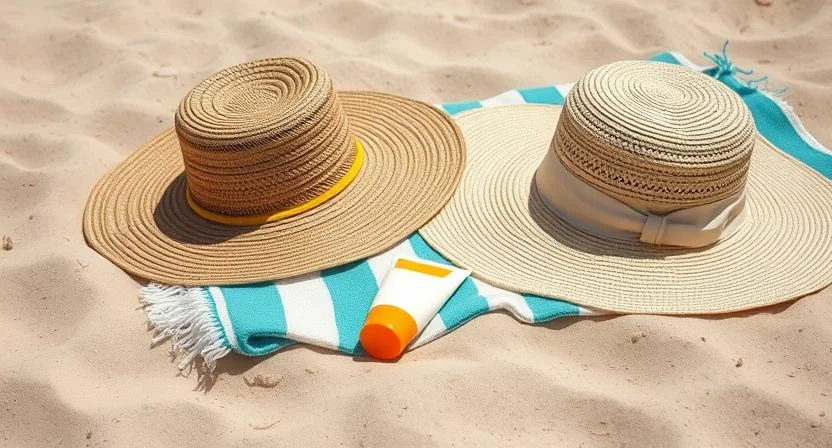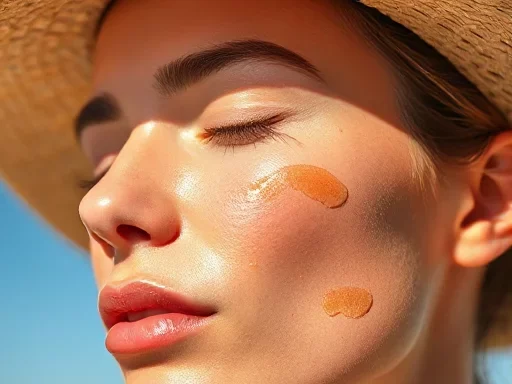Sunblock for Face: 4 Best Picks for Daily Sun Protection

Sunshine is beautiful but who likes to age quickly under Sun? The ultraviolet rays of Sun is the major cause of many skin disorders including cancer. Protecting your face from harmful ultraviolet (UV) rays is crucial for maintaining healthy, youthful skin. Sunblock for face not only shields against premature aging but also reduces the risk of skin cancer. By incorporating the right sunblock into your skincare routine, you can ensure effective protection while maintaining radiant skin. Here’s everything you need to know about choosing the best sunblock for your face.
Why Use Sunblock for the Face?
Continuous exposure to UV rays can cause premature aging, including wrinkles, fine lines, and dark spots. Moreover, sun damage is cumulative and contributes significantly to skin cancer risk. Daily use of sunblock helps to:
- Protect against UVA and UVB rays.
- Prevent sunburn and pigmentation.
- Maintain skin elasticity and hydration.
What is Meant by PA++++?
PA++++ is a rating system that measures the level of protection a sunblock offers against UVA rays, which penetrate deep into the skin and cause aging, hyperpigmentation, and long-term damage. The “PA” stands for Protection Grade of UVA, and the “+” symbols indicate the strength of the protection.
- PA+ offers some protection.
- PA++ provides moderate protection.
- PA+++ gives high protection.
- PA++++ offers the highest level of UVA protection.
This rating system helps consumers choose a sunscreen that not only guards against sunburn (UVB rays) but also protects against the harmful effects of UVA rays, such as premature aging and skin discoloration. Always look for a sunblock labeled with PA++++ for optimal protection, especially if you spend prolonged periods in the sun.
What is Meant by SPF?
SPF stands for Sun Protection Factor, which measures how well a sunscreen protects your skin from harmful UVB rays, the primary cause of sunburn. For instance, an SPF 30 sunscreen allows only 1/30th of the sun’s UVB rays to reach your skin. This means it offers 30 times the protection compared to bare skin. However, SPF only measures UVB protection, so for complete defense against both UVB and UVA rays, a broad-spectrum sunscreen is essential. Higher SPF levels provide more protection but must be applied properly and consistently to be effective.
What is the best sunblock for your face?
- Broad-Spectrum Protection
Choose a sunblock labeled as “broad spectrum” to shield your skin from both UVA (aging rays) and UVB (burning rays). UVA rays penetrate deeply and contribute to premature aging, while UVB rays primarily damage the skin’s outer layers, causing burns. - SPF 40 or Higher
Dermatologists recommend a sunblock with SPF 40 or above for optimal protection. For oily skin, gel-based sunscreens with SPF 50 are excellent as they absorb quickly and prevent greasiness. - Skin Type Compatibility
- Dry Skin: Look for sunblocks with moisturizing ingredients.
- Oily Skin: Opt for water-based or gel formulations.
- Sensitive Skin: Avoid products with fragrances, preservatives, and alcohol. Use mineral sunscreens with zinc oxide or titanium dioxide.
- Water Resistance
While no sunscreen is waterproof, water-resistant sunblocks are ideal for swimming or outdoor activities. Reapply every 40-80 minutes for continued protection. - Natural Ingredients
Sunscreens with natural ingredients like plant extracts and oils are gentler on the skin and offer additional hydration benefits.

Types of Sunblocks
- Chemical
- Contains ingredients like avobenzone and oxybenzone.
- Absorbs UV rays, converts them into heat, and releases it from the skin.
- Lightweight and ideal for daily wear but may irritate sensitive skin.
- Physical (Mineral Sunscreen)
- Made with zinc oxide and titanium dioxide.
- Reflects UV rays and is suitable for sensitive or acne-prone skin.
- Works immediately but may leave a slight white cast.
- Hybrid
- Combines chemical and physical filters for dual protection.
- Lightweight with broad-spectrum coverage, suitable for all skin types.
How to use?
- Apply Generously: Use a quarter to a third of a teaspoon of sunblock for your face and neck.
- Reapply Regularly: Every two hours or immediately after swimming or sweating.
- Layer with Makeup: Apply sunblock first, then layer with your makeup or moisturizer.
Which sunblock is best in Pakistan?
Bio One S.C Gel – Oily Skin Moisturizer for Sebum Control
Pharmaceris A Medic Protection Cream SPF 100+ (75ml) by Pharmaceris
Skin Aqua Clear white SPF 50+ pa+++ broad spectrum sunscreen for skin
Spectra Block SPF 60 with PA++
Conclusion
Sunblock for the face is an essential part of any skincare routine. By selecting the right product based on your skin type and lifestyle, you can protect against harmful UV rays, prevent premature aging, and maintain a healthy complexion. Whether you choose a chemical, physical, or hybrid sunblock, consistent application is key to long-lasting protection.



